Thus begins the quest for some homemade masa dough that will hopefully lead to mind-bending corn tortillas, tamales, and maybe even some pupusas.
We're taking some shortcuts here to prove that the process is accessible to anyone willing to give it a try, and so far the results are off the charts.
Homemade Masa Dough Recipe
First I want to mention that this method is new territory for me as well, so there might be some adjustments along the way. I'll update the posts as the process gets refined, so be sure to check back and re-read before starting a batch of your own.
For me, the Daniel Gritzer Serious Eats article on making masa using a food processor was the final impetus to get the dough rolling (worth a read). Masa dough is typically ground in a fine-grade industrial behemoth, but it's surprising how effective a standard food processor can be as long as you make a few tweaks to the process.
He also mentions a bag of organic corn that you can get on Amazon. And since dried field corn is surprisingly hard to come by this is what we're starting with. (Update: we recently made a batch using White Olotillo Corn and have also had success using plain ol' popcorn kernels.)
This is organic yellow field corn, and yes, that is 25 lbs. of corn, probably enough for more tortillas than you can eat over the next few years.
So how exactly does this transform into masa dough?
It's a good question and one that the ancient Meso-American cultures answered long before Chipotle colonized the process.
The nixtamalization process, in its simplest form, is treating corn with calcium hydroxide to make it more amenable to grinding. The outer skin of the kernel will partially dissolve and slip off after soaking in the calcium hydroxide. Beyond the reduction in labor, there's also an interesting health benefit in that the Cal increases not only the calcium content of the final product but also the niacin content.
Not to mention that nixtamalization creates that rich, authentic flavor that we tend to associate with traditional Latin cooking. So when asked in the quiz at the end of this post what the primary benefit of nixtamalization is...if your answer is "taste yum" then you are mostly there.
Okay, enough backstory...
Start by rinsing two cups of the dried corn in some cold water. Take a quick look for any stones or struggling kernels and discard them.
Add 1 tablespoon of the calcium hydroxide to 7-8 cups of water. You can get the calcium hydroxide at most Latin markets, and on Amazon you'll see it referred to as both Cal Mexicana and Pickling Lime.
Combine well with the water and then add the corn. (Note: it's best to use a non-reactive pot when using calcium hydroxide.)
Bring to a boil and then reduce heat to a simmer. Let simmer for 30 minutes or so, stirring occasionally. Make sure the corn is always submerged in liquid; you can always add more water if your pan calls for it.
When the outer skin of the kernels slip off easily then it's had enough cooking time.
You can also bite into the kernel. The outer portion will be slightly cooked but the inner portion remains dry and uncooked. Perfect!
Remove the pan from the heat, cover, and let it sit overnight at room temperature. This gives the calcium hydroxide time to do its job.
No one knows for sure exactly how long it needs, a minimum would probably be 6-8 hours. So yes, you could start it in the morning and use it for dinner if you wanted to, but I've just been letting it rest overnight, anywhere from 12-16 hours. After which it looks like this...
Drain the corn and then give it a good massage under some cold water.
Rub the corn between your hands to force the skins off the kernels. Most of them will slip off easily, but don't worry about getting rid of every last one. It's also worth replenishing the standing water a couple times until it starts to run clear.
And now the shortcut.
Instead of buying a fine-grade grinder, you can get by using a simple food processor. I'm using a smaller food processor so I'll grind it in two batches.
After starting with 2 cups of dried corn, you've now got about 4 cups of hydrated corn. So I'm adding 2 cups of the hydrated corn to a food processor along with 1/2 teaspoon of salt and 1/4 cup of water.
Give it a whirl. You might have to stop a few times to wipe down the sides.
And if it's not combining you can some additional water, 1-2 tablespoons at a time.
Eventually it will combine into a thick, dough-like substance. These batches took about 4-5 minutes each in the food processor and eventually turned into this blast from the past...
Look at the potential in that bowl! What do you see first? Tamales? Tortillas? The solution to all of life's problems?!!
The masa dough might be a little wet and that's okay, that comes with the territory of using a food processor to grind it.
And now I have both good news and bad news.
The good news is that I've already made a few batches of corn tortillas from this masa and they are delicioso. The bad news is that it would make this post way too long to include all the details here, so I'm going to do the corn tortillas in a separate post a few days from now (here it is). Here's what you'll end up with though if you've got corn tortillas on the brain...
Yowsa!
It's a simple process, but if the dough is too wet they are difficult to handle. Once you dry out the dough a bit then it's just a matter of flattening golfball sized rounds with a tortilla press or casserole dish...
...and cooking each side for 45-60 seconds.
And yes, after much experimenting (gorging), they can turn the simplest of tacos into something extraordinary.
But first things first...
Get some masa dough in the house! It will open up so many possibilities for your kitchen. Time to keep an eye out for some dried field corn 🙂
I'll put instructions in the recipe box below, but feel free to get in touch if you have any additional questions.
Buen Provecho.
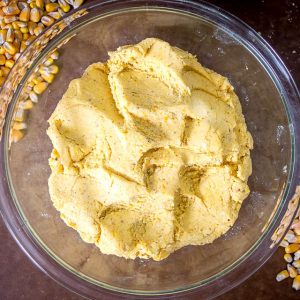
Homemade Masa Dough Using Yellow Field Corn
Ingredients
- 2 cups dried field corn
- 1 tablespoon calcium hydroxide
- 8 cups water
- 1 teaspoon salt
- 1/2 cup water (to grind the masa)
- 1/2 cup masa harina (optional)
Instructions
- Rinse 2 cups of dried field corn in cold water. Remove any stones or struggling kernels.
- Add 1 tablespoon of calcium hydroxide to 8 cups of water in a non-reactive pot (I used stainless steel). Combine well. Add the corn to this mixture.
- Bring to a boil and then reduce heat to a simmer. Cook for 30 minutes or so, stirring occasionally. When the skins of the kernels slip off easily then it's had enough cooking time.
- Remove from heat, cover, and let sit overnight at room temperature.
- The next day (or at least 6-8 hours later) drain the corn and massage it under running cold water. Use your hands to remove the skins from the kernels. Change the standing water a couple times until it starts to run clear.
- Drain the corn and add to a food processor. You'll need 1 teaspoon of salt and approximately 1/2 cup of water for the whole batch (as photographed above I ground it in two batches in a smaller food processor). Wipe down the sides of the food processor occasionally. It will need approximately 4-5 minutes to thoroughly combine, you can add splashes of water if it's not combining well.
- Use immediately or cover with plastic/foil and store it in the fridge.
- If you want to make tortillas with the masa dough, adding some masa harina to it will make it easier to handle. I added about 1/2 cup to this batch.
Notes
Disclaimer: Yes, there are affiliate links on this page. That means I get a small percentage of the sale if you decide to try out one of the linked products, at no additional cost to you. But my opinion is not for sale and I only recommend products that I actually use and trust. Email me if you have questions about this.
Still hungry?!
Want to receive Mexican Please recipes via email when they are posted? Sign up below to subscribe. All recipes are spam free.


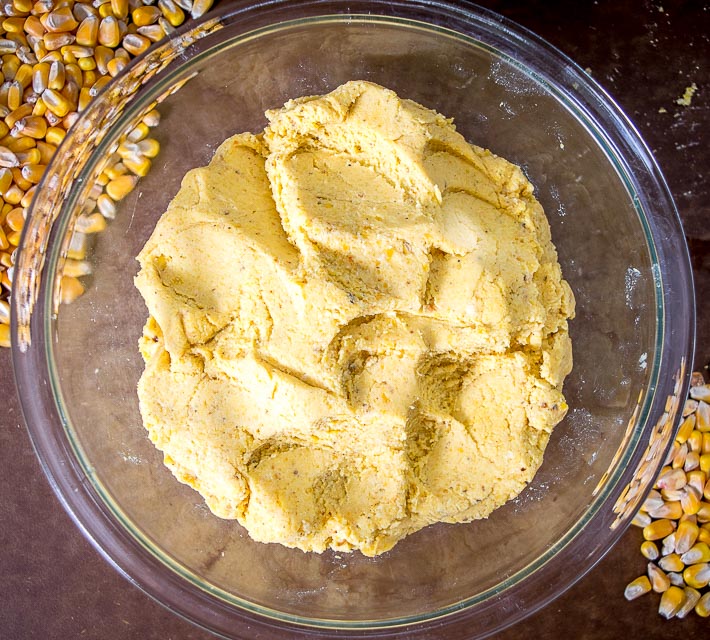
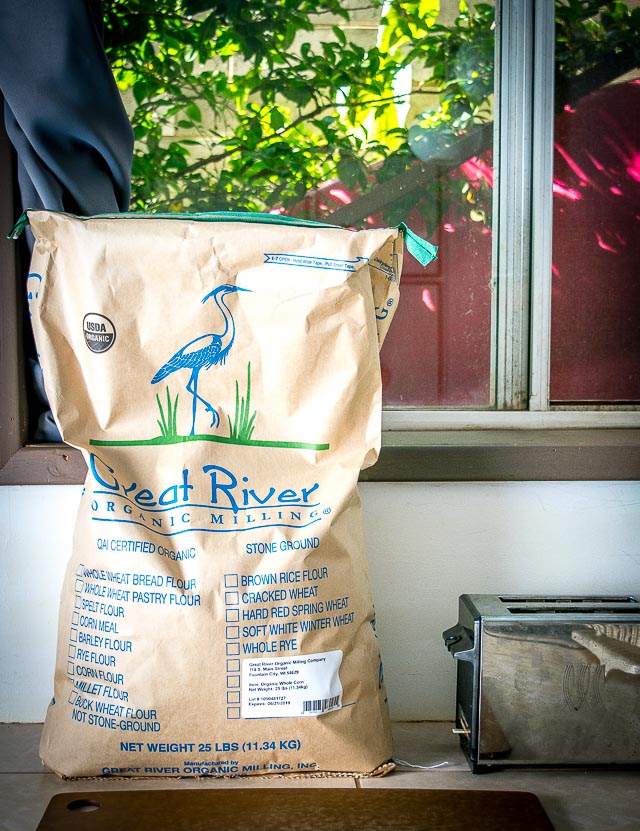
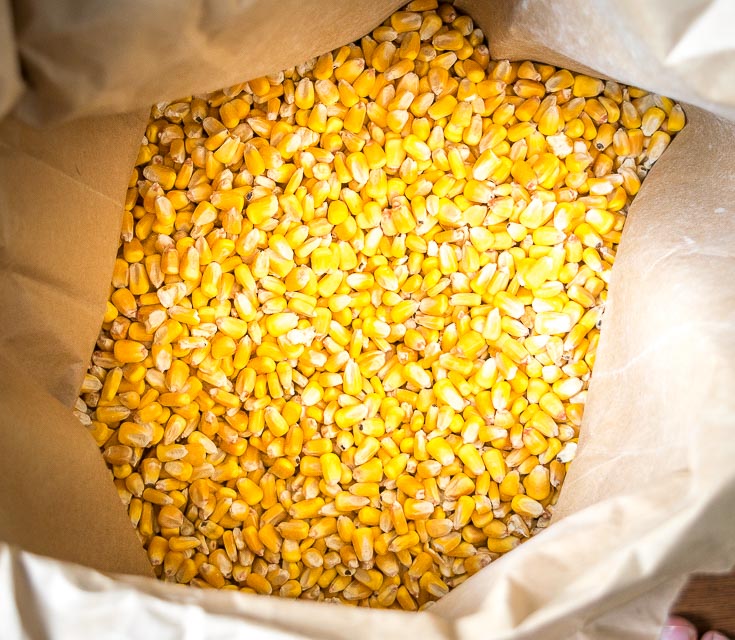


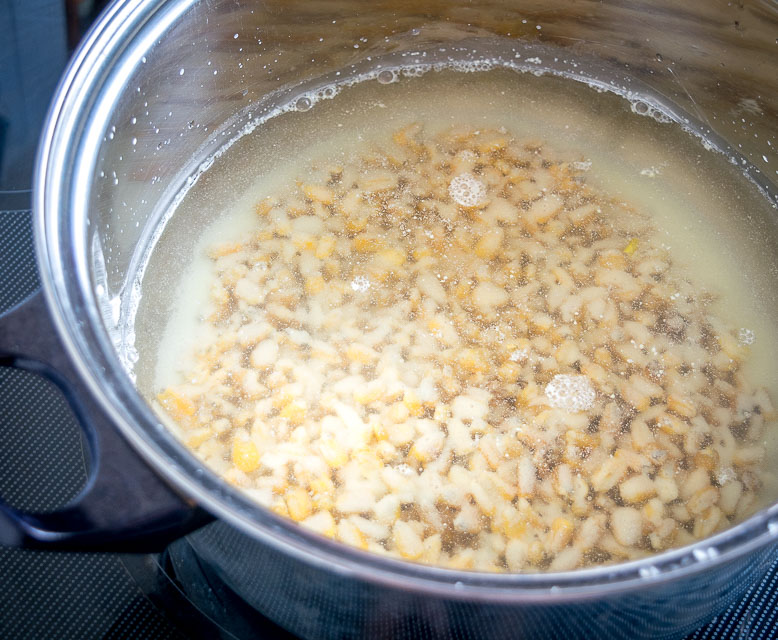
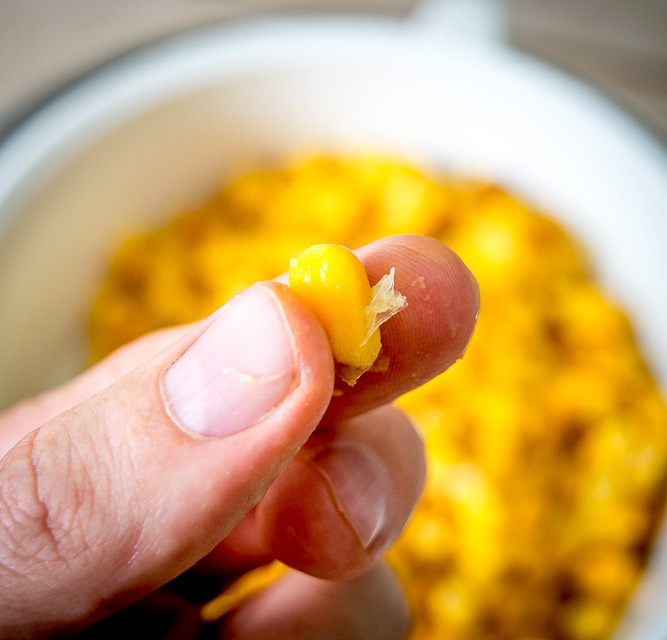

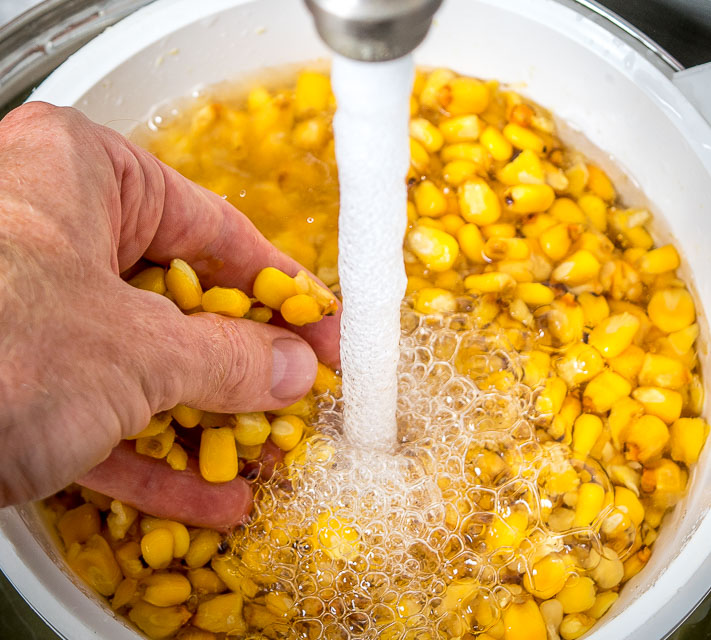
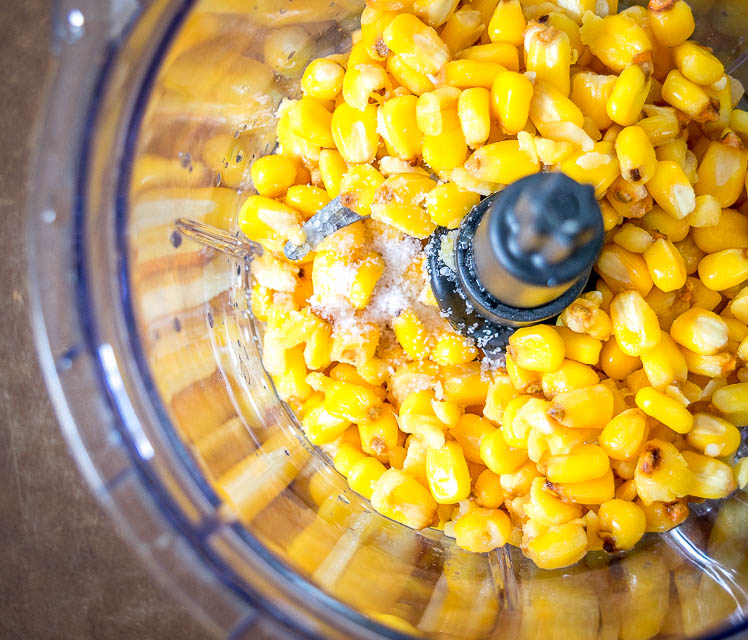
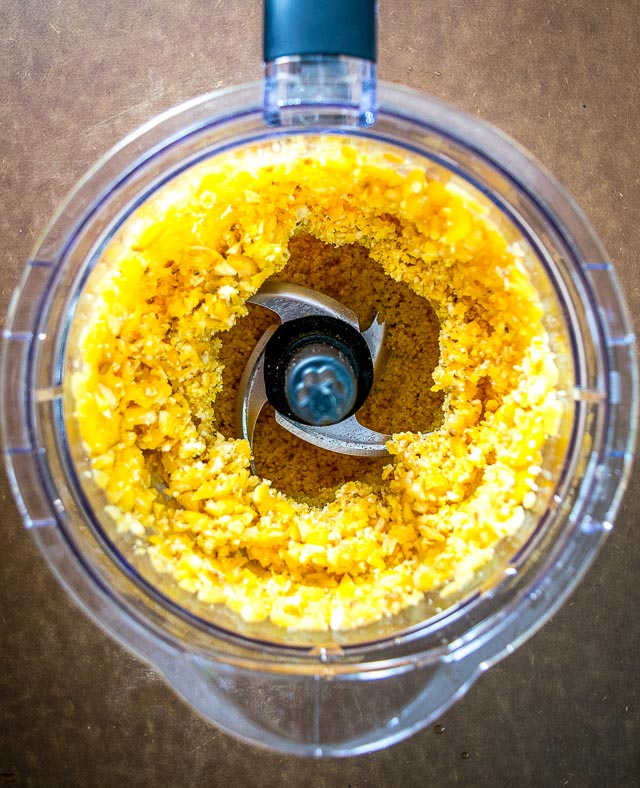
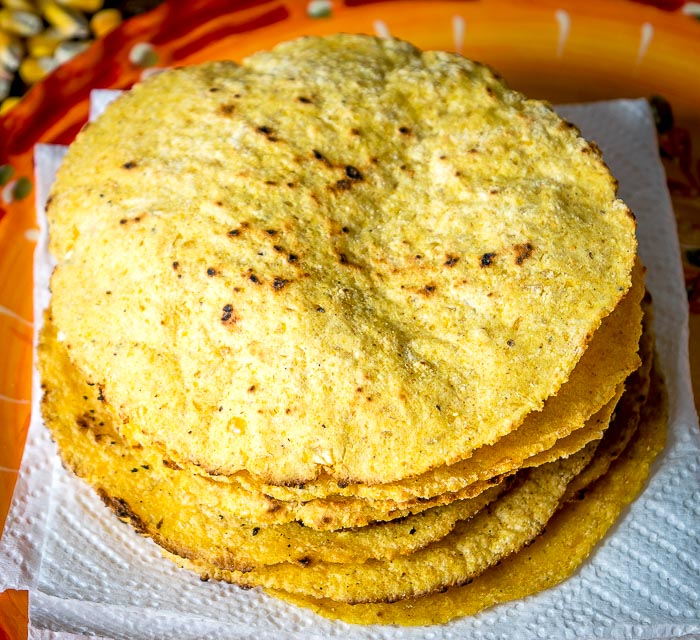
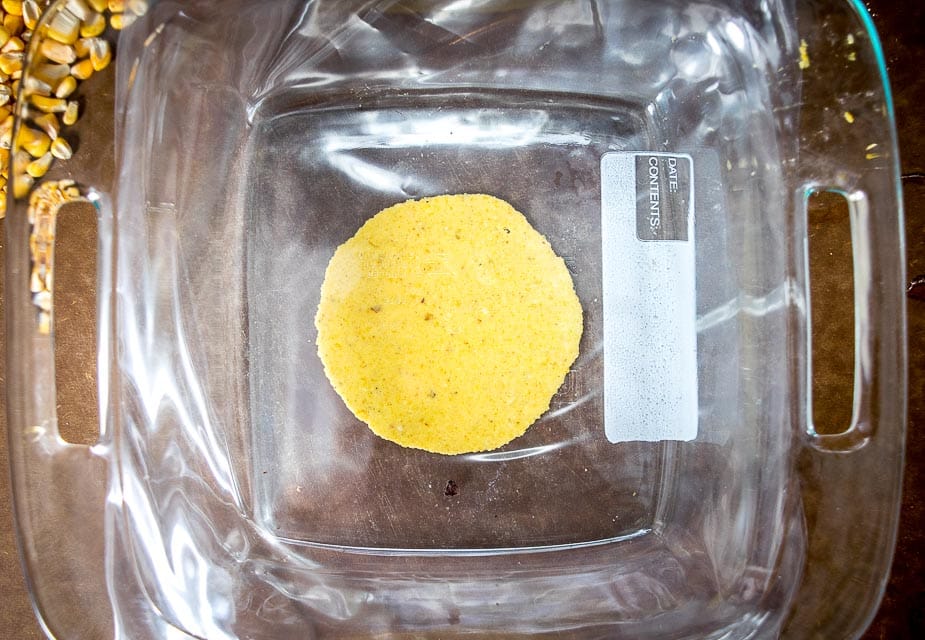

Virginia Wence
Being from the Chicago area, I was spoiled with fresh made masa. I used to buy it from a Mexican store while it was still warm. Now living in Florida, you can't get that here. All we have is the flour mix, it tastes like cardboard. After visiting this site and reading the comments, I bought the dried field corn and pickling lime. THANK YOU!! This is what I've been missing! The texture, the authentic flavor, it's wonderful! I made a batch of tamales and they were perfect. I shared them with friends, they were gone in a heartbeat. Again, thank you!!
Patrick
Awesome thanks so much for the trip report Virginia! Sounds like there is an opportunity for someone to start selling freshly made masa in your area (you?!!).
Peggy
What all did u do with fresh corn masa to make ur tamales. Was lard or anything incorporated in it.
Virginia Wence
Hi Peggy. I added lard, (not shortening), and baking powder. I usually make pork tamales, so I also add some of the meat broth to give it that spreadable consistency.
Leah Perlongo
Difficult to find dried corn? If you have a feed store nearby, couldn’t you use the whole corn labeled for chicken feed? It’s yellow field corn.
I’ve been eying doing homemade masa for awhile, but I never considered using a food processor! This is a great post, thank you!
Patrick
Hola Leah! Yeah you could probably use that corn and get a good result, but I think other varieties might offer up better flavor. Cheers.
Paul Solt
I would be concerned about it not being food grade if bought from a feed store. See what the labels say, Country Max had it, but there were labels stating it was not for human consumption.
I’m going to experiment with Arrow Mills yellow popcorn, and then I talked to 3 farmers at the Rochester Public Market about getting field corn. Checkout your local market.
Sandy
I would like to know how the popcorn turns out. As I stated above popcorn makes the best cornbread!
Kelly
Did you make them with the popcorn? I want to make mine with sprouted corn and sprouted popcorn is all I can find. Would love to know how yours turned out.
Crystal
I'm having a hard time understanding why you rehydrate corn for this. What can't you use fresh corn? Or just powder the dried corn and add some water to rehydrate? I'm not a cook, I'm just interested.
Patrick
Hi Crystal, good question! Soaking the corn in calcium hydroxide not only increases the nutritional benefits and flavor, but it also removes the outer skin of the corn and makes it easier to grind it into a fine dough. Although I've never tried it, I don't think you'd be able to get fresh corn to form into a dough, and even if you could I think the flavor of the final product would be kinda meh. Hope this helps a bit. Cheers.
Crystal Rassi
Thanks!
Paul Solt
I think it could work, if you soaked it in picking lime, rinsed it, and let it dry out in a colander, I’m going to try a few varieties of corn.
Right now I’m doing my second batch with popcorn from my local farmers market.
I also just bought the corn nixtamal book: https://www.masienda.com/bodega/nixtamal-book
Sandy
Great post Patrick this is wonderful information. Thanks to you and the old Texan after we get through our tour of Italy will be moving on into Mexico!
If any of you are on the East Coast basically Virginia on down. Than west Southern States Mississippi Alabama Louisiana a great resource is a company called Bread Becker's. They have co-op's and bring buckets and bags of grains right to a pickup site! You will have shipping but if you buy over $300 worth of products which I do easily they take off 10 or 15% which pays for the shipping. Then they ship United States wide if you are not in a Co-Op area.
Patrick
Awesome thanks much for the info on the co-ops Sandy, super helpful!
Dan
Hello! I’m currently making masa for tamales with an heirloom corn I purchased from a place called Masienda. https://www.masienda.com/bodega/
They specialize in heirloom varieties of corn from Mexico and I love their cause. So far I’ve only tried the white olotillo with great results.
Patrick
Wow thanks so much for your note Dan! Never been to their site before and looks like they have multiple varieties of corn to choose from, so cool. Looks like the yellow corn is sourced from Oaxaca -- makes me want to try it!
Jim Wheeler
If dried field corn is difficult to come by, I wonder if you couldn't use old-fashioned popcorn? Or better yet - maybe you could use the corn that hunters put out to attract deer.
Patrick
Hey Jim, good question! When searching around for field corn I remember being kinda bewildered by the range of varieties and the lack of info describing the differences between them -- most likely because there aren't many retail customers buying huge bags of field corn heh. But it's true, the varieties probably have quite a bit in common with each other. Here's someone who tried making tortillas from popped popcorn:
http://www.sweetcannela.com/recipes/side-dishes/popcorn-tortillas-tortillas-de-palomitas-de-maiz/
Sandy
You're corn tortillas look incredibly delicious so why would think that this is definitely the Process and corn I would use. The popcorn just seems like it is 2 dried and cracked in the other posts pictures. But now let me tell you what popcorn is good for. It makes the best corn bread ever! With my grain mill you can't mill dent corn. So they suggested In the recipe instruction manual that you mill popcorn because it makes the best cornbread ever and they were kidding.
Patrick
Wow that is news to me, thanks for the info! We have a Chipotle Cornbread recipe on the site and I would love to try it with that. Cheers!
Angela Alvarado
Can this recipe be doubled?
Patrick
Hi Angela! Yup you can easily double the recipe, but you might not need to completely double the water amount depending on the pan you're using. Just be sure that there is enough water to completely submerge the corn and you are good to go. Good luck!
Sonia Mendez Garcia
Great post Patrick!!!! Now I just have to find some field corn!
Patrick
Thanks Sonia! I know, field corn is surprisingly hard to come by. I don't have any experience with the following, but here's a few more online options that popped up in my searches over the past couple weeks: Honeyville, Azure Standard, Rovey Seed, Pleasant Hill Grain.
Philippa Alderton
I think you guys are too civilized. You can get field corn by the 50 lb sack at almost any feed store. Me, I'm looking for the colored corns- blue and red, for personal amusement.
Esther
Patrick, instructions state that this recipe makes 16 servings. Can you translate to cups? Thought I saw 2, but want to verify. May try this for a small batch of tamales. Unfortunately, wouldn't work for our Christmas tamalada, as we make around 20 dozen at that time.
Patrick
Hola Esther! If you start with 2 cups of dried corn you'll end up with close to 4 cups of masa dough, maybe a little under. And so far each cup of masa dough seems to make about 6-8 tortillas, but not sure about tamales yet. Hope that helps!
Patrick
Esther
Thanks, Patrick! Will give this a try. I'm so spoiled, using prepared mass, but would love to try a super-authentic recipe at least once!
Patrick
Yeah if you are in an area where you can buy prepared masa dough you are super lucky 🙂
Esther
I am very lucky. I live in the metro Phoenix area, so between tortillerias & Mexican super markets, I'm very spoiled!
Steffanie
How is this treatment process different from the way hominy is made? Because you can buy yellow hominy corn.
Patrick
Hi Steffanie! After nixtamalizing (soaking overnight in calcium hydroxide and rinsing off the skins) you essentially have made hominy. Of course, you might notice a taste improvement compared to storebought 🙂
Old Texan
Thanks for the heads up on buying corn from Amazon, I have been unable to locate food grade corn locally. My grandmothers made hominy from home grown field corn.
Patrick
I know, it seems kinda crazy how difficult it is to find dried corn. Another reader mentioned Masienda as a source so that could be an option too, but I haven't tried that one yet.
Lauren Jayne
Masienda was wonderful. Reasonably priced, super quick shipping ( I ordered a bag of each color Sunday and it arrived Thursday). The best part? A hand written thank you note with the order. Now THAT’S a business practice that creates loyalty and keeps you in your client’s memory. Nice work, Masienda. I’ll be back and I’ll be sure to share my experience.
Old Texan
Nope. This is not hominy. Although the nixtamalization process is similar, believe it or not lye or sodium hydroxide is used to make hominy. Or traditionally wood ashes were used. The processes are similar, but hominy has to be washed a lot. I have helped both my grandmothers make hominy. I drew the well water for washing.
Calcium hydroxide is lime, sometimes sold as "pickling lime." The taste of the resulting product is different, but the Niacin is released by either process. The indigenous people of North America that grew corn used wood ashes. Wood ashes produce potassium hydroxide, that also can be used to make soap. I have read that the nixtamalization process never reached North America, pre-colonization. But it did, probably the reason wood ashes were used, is because lime was not readily available. A corn rich diet, without nixtamalization, causes a condition called pellagra, which is a deficiency of Niacin, or B-3. A side note, in the Southern US when hominy or grits were not eaten regularly, an epidemic of pellagra ensued. That is why breakfast cereals are fortified with Niacin.
Patrick
Thanks much for these notes Old Texan!
Sandy
Wow old Texan this is an amazing read. What tastes different between doing it with the lime and the wood ash in your opinion? My 2nd question is that you stated the niacin comes out in either process so that means that it is nutritious either way? Then my final question is what do you have to wash off so much just the wood ashes are persistent in staying stuck to the corn or what's going on there?
Holly
Actually, hominy IS the product of nixtamalized corn; whether the alkalyzing substrate is wood ash lye or lime is irrelevant, each produces a hominy wih a different taste... I have been lucky enough to learn to make hominy for sofke from some Muscogee Creek friends in Oklahoma, and have also learned to make corn tortillas after processing the dried corn through nixtamalization, even lucky enough to use a metate! Loads of work, but man did those tortillas taste incredible.
The word nixtamal comes from the Aztec language Nahuatl: nextli ashes + tamalli tamale
If you are interested in more info, here is a book you might like: Beautiful Corn: America’s Original Grain from Seed to Plate, by Anthony Boutard.
Laura Austin
Wow. That is interesting. Thanks.